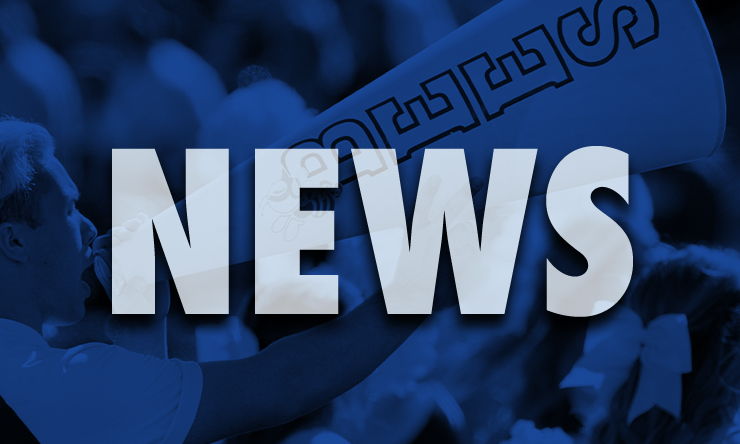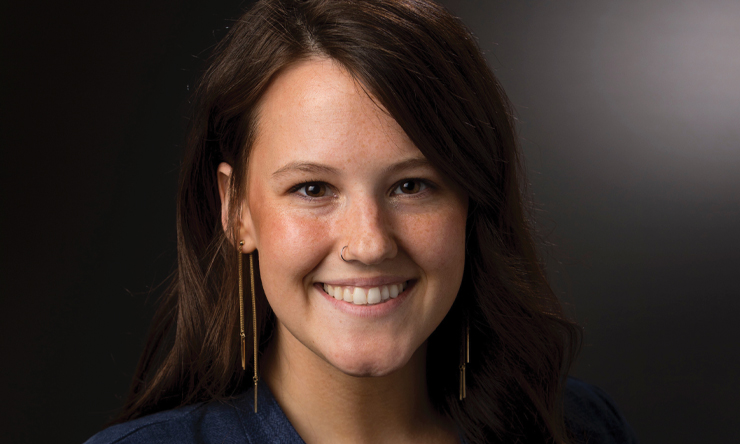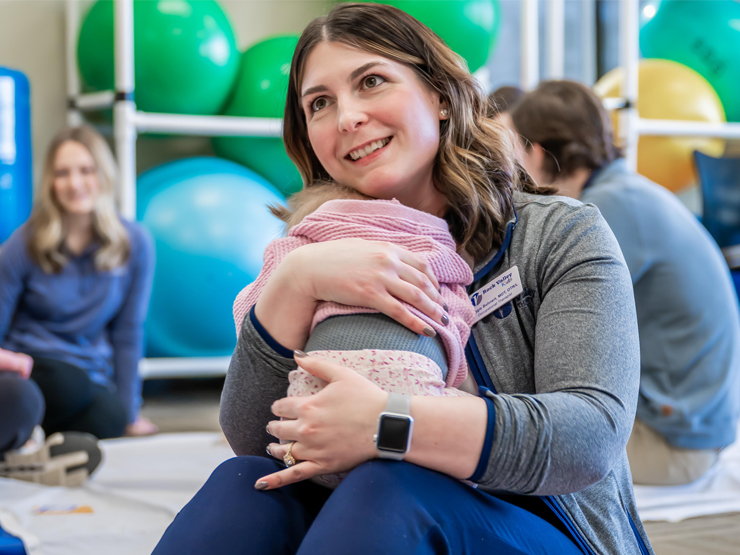Any gardener worth his salt can produce record-breaking yields, even the blue ribbon-winning tomato or two, when the ground is richly primed, the sun kind, the rain gentle and the breezes fair. Not so when the soil is exhausted and the elements have scorched and battered tender sproutlings. Then, a gardener's skill, ingenuity and wisdom can make the difference between a garden that's barely surviving and one that thrives.
It's the same with looking after a university, especially during tough times such as these. Whether it's monitoring a volatile national climate of rising higher education costs and decreasing resources for both public and private colleges, or training an eye on the horizon for looming statewide and regional concerns such as Iowa's declining high school graduation rate and the possibility of a public university in the Quad Cities by 2005, the same kind of stewardship is key to keeping St. Ambrose in the green.
So how is St. Ambrose faring, and how will the university grow so that it thrives throughout its second hundred years?
With Strong Roots
Actually, today's St. Ambrose is in the enviable position of being on solid ground. "The institution is financially sound, doing well and is a good investment for supporters," says Ed Henkhaus '64, vice president of finance.
Underscoring this assurance are the results of the fiscal evaluation St. Ambrose underwent this spring by Standard & Poor's, a global provider of independent investment data. S&P's upgraded rating allowed the university to secure a $38 million bond with Northern Trust of Chicago to refinance three former bonds and fund new capital projects, mainly the 64,000-square-foot university center.
According to the Commonfund Institute, a provider of investment fund management services for nonprofits, a debt capacity review of this type ensures a university is fully optimizing its capital structure and assets, which is especially essential in this economic environment. In St. Ambrose's case, restructuring the university's debt at this time afforded the added benefit of historically low interest rates.
A large part of S&P's positive outlook hinged on the consistently balanced operations St. Ambrose has achieved over 16 consecutive fiscal years, coupled with considerable enrollment growth-34 percent-over the past seven years. Both are the result of prudent financial aid and tuition increase practices, says President Ed Rogalski. "Some institutions have gotten in fiscal trouble because they've tried to fix a declining enrollment with heavy tuition discounting," he explains. "We haven't allowed our financial aid to drain our budget while still recruiting academically outstanding students and students of diversity."
Although institutional financial aid has nearly doubled in the past six years-from $6.2 million to this fall's $11.1 million-St. Ambrose's tuition discount rate is still less than the 35 percent generally accepted for private institutions, and the university is considered moderately priced among Midwestern private colleges.
"We want to maintain the affordability of SAU's education so we can continue attracting people who are a good fit," says James Loftus, vice president of enrollment management and student services. "One way to do this is through more academic- and performance-based awards and endowed scholarships."
With Careful Cultivation
Endowment continues to be a major challenge for the university, says S&P's report. At approximately $23.1 million, St. Ambrose's endowment continues to fall below average compared to similar Midwestern private colleges. On the upside, despite the past few years' bear market that caused college endowments nationwide to decline an average of 6 percent in 2001-02, their worst performance since 1974, St. Ambrose's endowment held its value. Henkhaus says this is due mostly to strategies that have kept to a conservative 27 percent invested in equities. "We're not in the business of outguessing the market," he says. "There are a lot of institutions that got hurt badly doing that."
According to Moody's Investor Service, a national source for credit ratings, research and risk analysis, the private institutions hardest hit by the current economic downturn are those that significantly grew their core educational expenses-salaries, financial aid, facilities enhancement and new academic ventures-based upon their endowment's growth.
Again, St. Ambrose's budgeting policies have kept the university out of that thicket. "We haven't drawn down on our endowment or built high percentages from the endowment into our operating budget," Rogalski says. Growing St. Ambrose's endowment is vital, however, if the university is to remain hardy, and accomplishing such growth in today's economy has proved a tough row to hoe for most colleges.
According to Ed Littig, vice president for advancement, the fact that about 45 percent of St. Ambrose's alumni graduated in the past 15 years means that most alums have yet to reach the time in life when they have more resources for charitable giving. Yet, "Institutions like ours depend upon those who have gone before to ensure that the foundation remains strong for students, today and tomorrow," he says.
With Broadened Horizons
The intergenerational equity that a healthy endowment ensures becomes even more important as the baby boom "echo" comes into full bloom. An October 2002 report from the U.S. Department of Education puts growth projections for graduating high schoolers at about 9 percent over the next six years, then declining at a rate of 3.4 percent by 2012. As a result, colleges nationwide will need to expand wisely to accommodate the bumper crop of students, with a solid plan for when that yield drops off. At that time, Commonfund says, a competitive advantage will go to the institutions that have sought markets outside the United States.
St. Ambrose is in fact already pursuing these opportunities, with one program in China and ongoing explorations into such markets as Eastern Europe and South America. "We've also spent great effort improving international opportunities for our students," adds Lori Rodrigues-Fisher, vice president of academic affairs. "Study Abroad recently expanded to Ireland and the students came back with a great deal of enthusiasm. In our other programs in Germany and Ecuador, there's as high a level of satisfaction."
Another reason to seek more fruitful ground is that, at home, it's not as fertile. In contrast to national projections, high school graduation rates in Iowa are expected to decline by 3 percent between now and 2010. And Western Illinois University in Macomb continues to seek support to establish a Quad Cities campus where they can expand their educational services to include more undergraduate degrees.
Although plans are still germinating, WIU presents a challenge for existing higher educational institutions in the area. And while St. Ambrose remains responsive to these shifts of climate, "we still expect to gear our expansion into the markets that are consistent with our mission," Rogalski says.
Expanding to more of a regional private university is one strategy that's already been seeded. "With a declining Iowa graduation rate, we'll be mining the markets in the surrounding states and doing a wider search for students, especially in those communities and high schools where students are inclined to matriculate to a Catholic college," he says. "Our financial stability and health depends upon us making good decisions between now and 2020," adds Henkhaus.
Rogalski agrees. "We keep fine-tuning our approach," he says. "We cannot be all things to all people. We need to continue to meet the essential mission of our institution."
News
Share This Story



